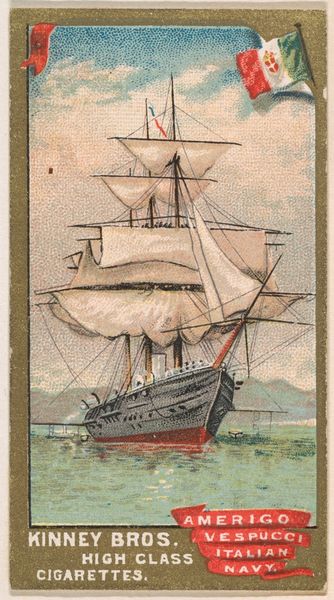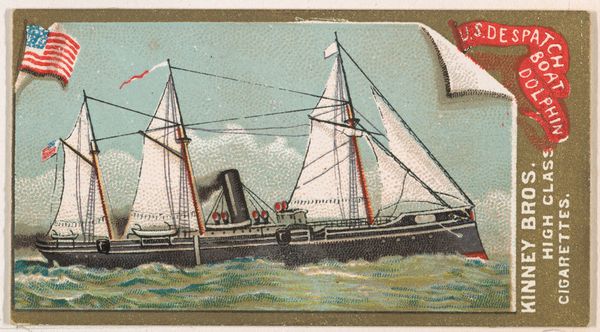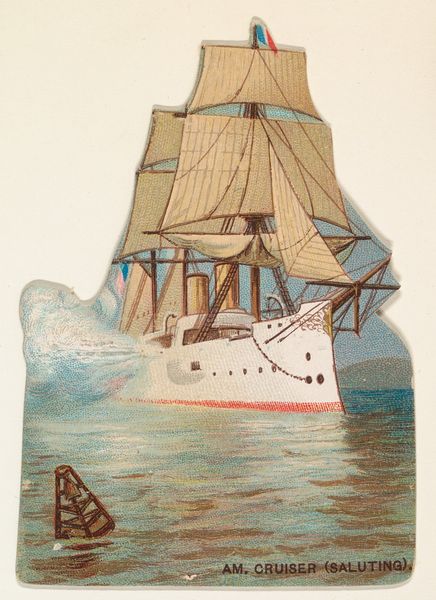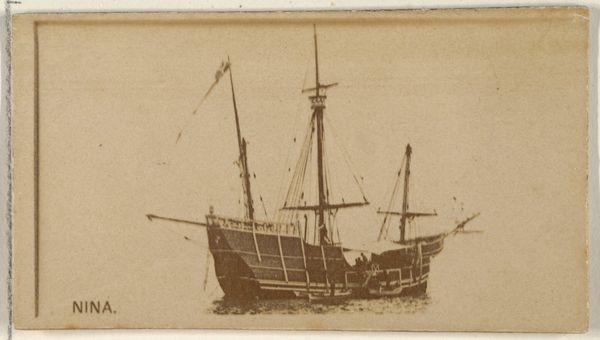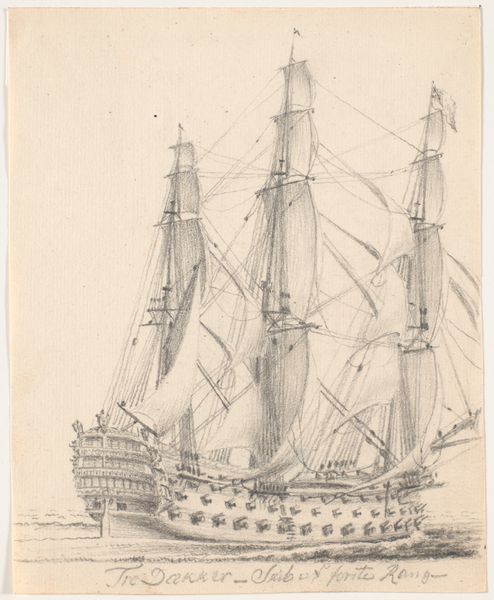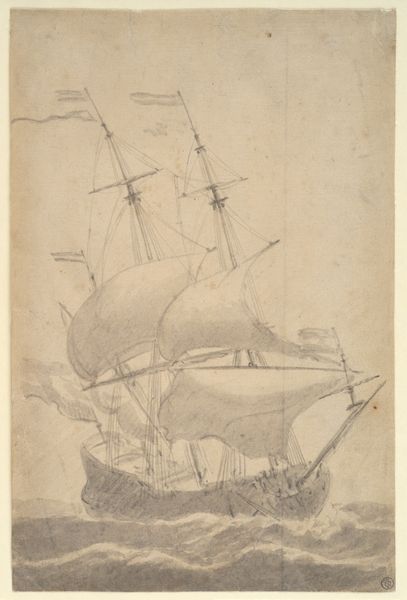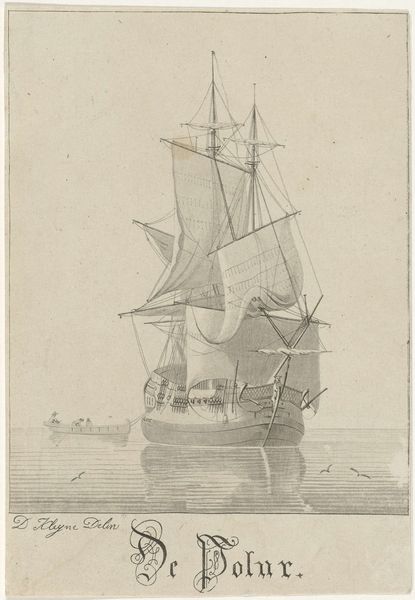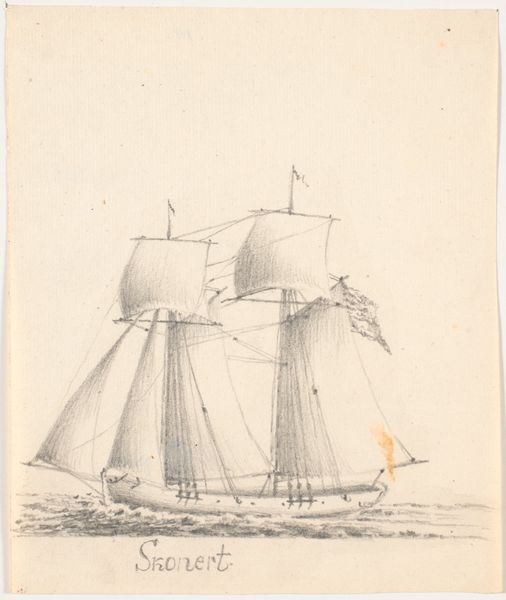
U.S. Sloop of War Adams, from the Naval Vessels of the World series (N226) issued by Kinney Bros. 1889
0:00
0:00
Dimensions: Sheet: 2 3/4 × 1 1/2 in. (7 × 3.8 cm)
Copyright: Public Domain
Curator: This image, created in 1889 by the Kinney Brothers Tobacco Company, features the U.S. Sloop of War Adams, and comes from their "Naval Vessels of the World" series. It is currently held in the collection of the Metropolitan Museum of Art. Editor: My first impression is of a somewhat naive charm. The rendering of the waves and the almost cloud-like puffs of smoke lend a stylized feel that tempers any potential sense of drama or historical weight. Curator: Indeed. It’s important to consider the context of this piece: tobacco cards like this were collected and traded, so their impact stems less from fine art intentions, and more from conveying information about naval power while fitting into a small format. Notice the flag and how it is positioned so closely. Editor: Yes, the flag, of course. Its presence certainly signals intended meanings: patriotism, the authority of the American government and its armed forces. The way the ship cuts through the waves creates interesting lines in the composition. Do you think there's any conscious reference to Ukiyo-e? The wave patterns seem reminiscent of Hokusai. Curator: That's an intriguing point! Given the rise of Japonisme in the West during this period, it is certainly possible, even probable, that the artist consciously or unconsciously incorporated elements of Ukiyo-e's aesthetic—simplified forms, flat planes, bold outlines. Ships themselves carry immense cultural significance, representing exploration, trade, and conflict, serving as a vessel that reflects collective aspirations, technological prowess, and at times, our darker impulses towards dominance. Editor: It’s amazing how the piece operates both as historical document and as aesthetic object. There is also an aspect of idealized heroism and national ambition communicated in those small dimensions and design elements, a visual vocabulary reflecting how that was thought to inspire potential recruits. Curator: I agree. It’s an image carrying a wealth of visual associations, not only in terms of naval history, but the construction of national identity as promoted for marketing in the late 19th Century. Editor: And I see that even a seemingly straightforward image of a ship at sea can open up complex avenues of interpretations when examining form and historical content together.
Comments
No comments
Be the first to comment and join the conversation on the ultimate creative platform.
